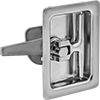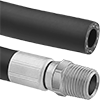Filter by
Finish
Mount Type
Mounting Location
Latching Distance
Overall Length
Mounting Screw Size
Strike Plate Material
Weight Capacity
Draw Latch Type
DFARS Specialty Metals
Handle Material
Strike Bolt Material
Bar Material
Lock Material
Building and Machinery Hardware
Fabricating and Machining
Fastening and Joining
Material Handling
Containers, Storage, and Furniture
Facility and Grounds Maintenance
Communication
Fluid Handling

























































































